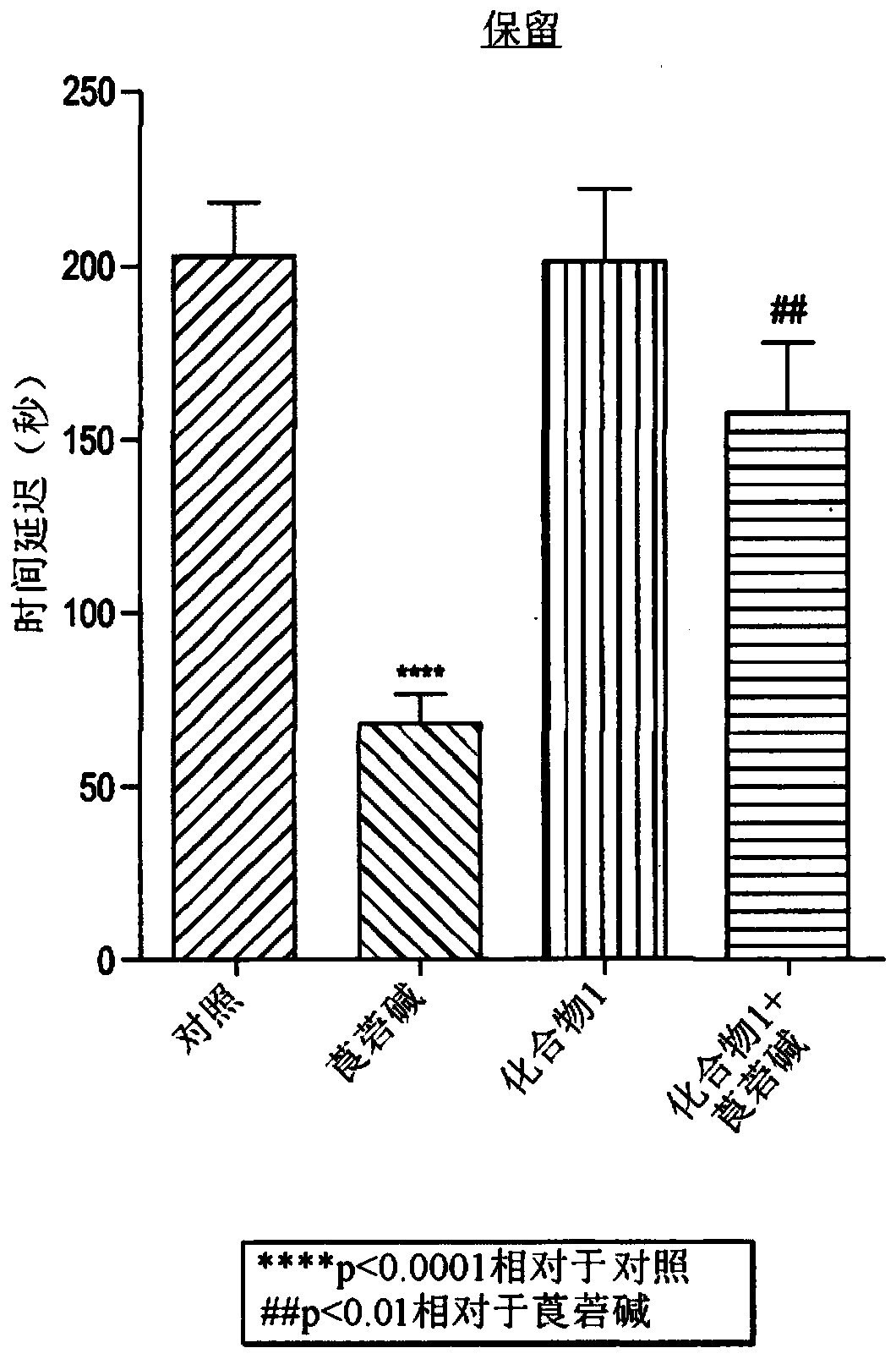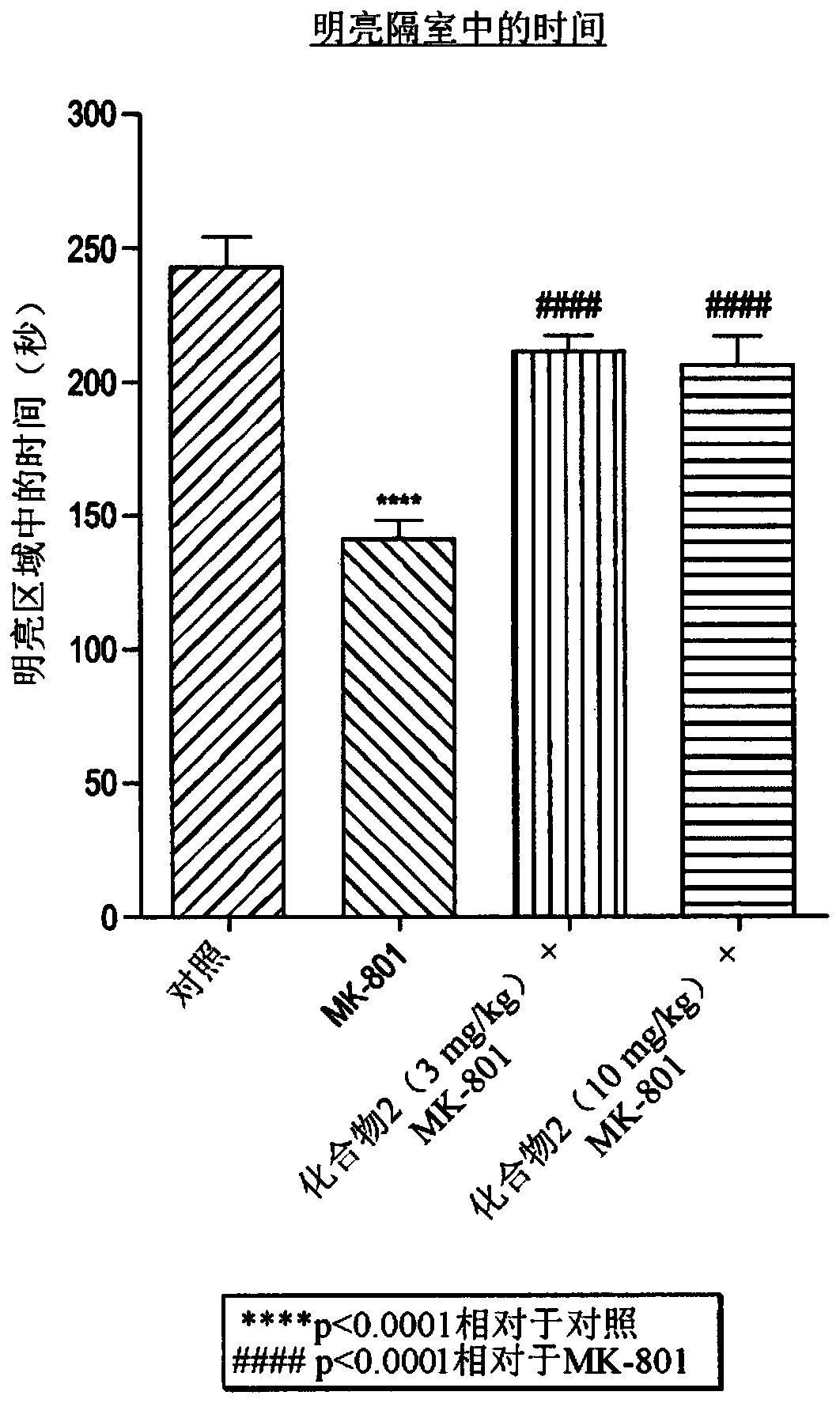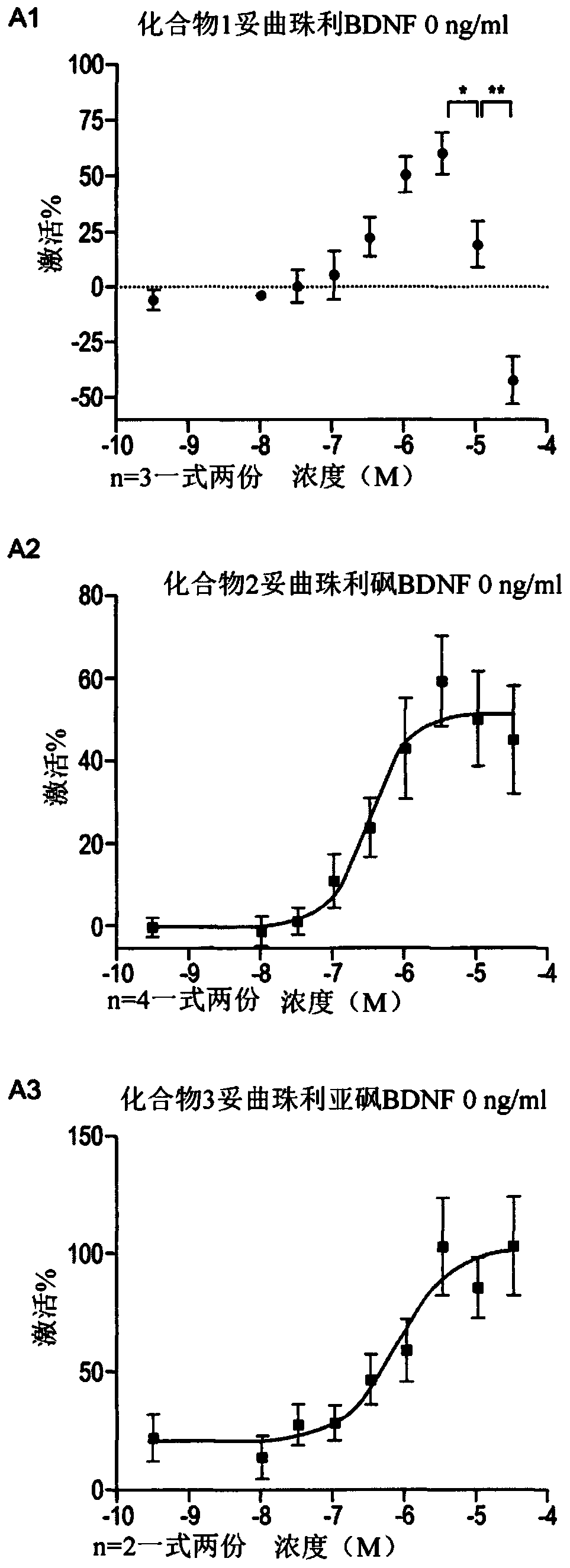Triazinetrione derivatives and their use as modulators of neurotrophin receptor and receptor tyrosine kinases
A technology of uses, compounds, in the field of triazinetrione derivatives and their use as modulators of neurotrophin receptors and receptor tyrosine kinases, capable of addressing unselected potential candidates for Alzheimer's disease compounds, lack of inhibitory activity, etc.
- Summary
- Abstract
- Description
- Claims
- Application Information
AI Technical Summary
Problems solved by technology
Method used
Image
Examples
example
[0331] General method:
[0332] All solvents were of analytical grade, and commercially available anhydrous solvents were typically used for reactions. Starting materials used can be purchased from commercial sources or prepared according to literature procedures, room temperature means 20°C-25°C. Solvent mixture compositions are given in volume percent or volume ratio.
[0333] MW heating was performed in a standard MW reactor producing continuous irradiation at 2450 MHz. It is understood that MW can be used to heat the reaction mixture.
[0334] On Merck TLC-plate (silica gel 60F 254 ) and spot UV visible. TLC is usually used to monitor the progress of the reaction and the solvents used are eg: 1-10% MeOH in ethyl acetate or acetonitrile or DCM, 0-95% hexane in ethyl acetate. Direct phase flash column chromatography ("flash" / "column chromatography") performed on Merck silica gel 60 (0.040-0.063mm) or basic or neutral alumina, or automatically using ISCO Companion T...
Synthetic example 1
[0359] Synthesis example 1 (compound 4)
[0360] 1-[3-Methyl-4-(4-trifluoromethanesulfinylphenoxy)phenyl]-3-phenyl-1,3,5-triazinane-2,4,6-trione
[0361]
[0362] In a 30 ml sealed tube pre-equipped with a magnetic stirrer, ethoxycarbonyl isocyanate (0.291 g, 0.0025 mol) was added to 1-(3-methyl-4-{4-[(trifluoromethyl yl)sulfinyl]phenoxy}phenyl)-3-phenylurea (Intermediate 69, 0.570 g, 0.0012 mol) in toluene (5.70 mL). The resulting reaction mixture was heated at 110 °C for 16 hours. The solvent was evaporated under reduced pressure to obtain crude product. The crude product was purified by preparative HPLC using 0.1% ammonia as modifier and water: acetonitrile (0-100% gradient system) as mobile phase to give 0.045 g (8% yield) of the title compound. 1 H NMR(400MHz,DMSO-d6)δppm 2.18(s,3H)7.15-7.26(m,3H)7.29-7.36(m,1H)7.37-7.55(m,6H)7.90-7.98(m,2H)12.05( s,1H); MS(ES-)m / z 502[M-H] -
Synthetic example 2
[0363] Synthesis example 2 (compound 5)
[0364] 1-(3-Methyl-4-{4-[(trifluoromethyl)sulfanyl]phenoxy}phenyl)-3-phenyl-1,3,5-triazinane-2,4 ,6-trione
[0365]
[0366] In a 30 ml sealed tube pre-equipped with a magnetic stirrer, 1-(3-methyl-4-{4-[(trifluoromethyl)sulfanyl]phenoxy}phenyl)-3-phenylurea (Intermediate 68, 0.60 g, 0.0014 mol) was dissolved in toluene (6.00 mL) and cooled to 0 °C. Ethoxycarbonyl isocyanate (0.247 g, 0.0021 mol) was added to the reaction mixture. The reaction mixture was stirred at 110 °C for 16 hours. The solvent was evaporated under reduced pressure to obtain crude product. The crude product was purified by combined flash chromatography using ethyl acetate as mobile phase and 60-120 silica as stationary phase. The obtained product was further purified by preparative HPLC purification using 5 mM ammonium bicarbonate + 0.05% ammonia as modifier and water: acetonitrile (0-100% gradient system) as mobile phase to give 0.020 g (2.9% yield ) of t...
PUM
 Login to View More
Login to View More Abstract
Description
Claims
Application Information
 Login to View More
Login to View More - R&D
- Intellectual Property
- Life Sciences
- Materials
- Tech Scout
- Unparalleled Data Quality
- Higher Quality Content
- 60% Fewer Hallucinations
Browse by: Latest US Patents, China's latest patents, Technical Efficacy Thesaurus, Application Domain, Technology Topic, Popular Technical Reports.
© 2025 PatSnap. All rights reserved.Legal|Privacy policy|Modern Slavery Act Transparency Statement|Sitemap|About US| Contact US: help@patsnap.com



